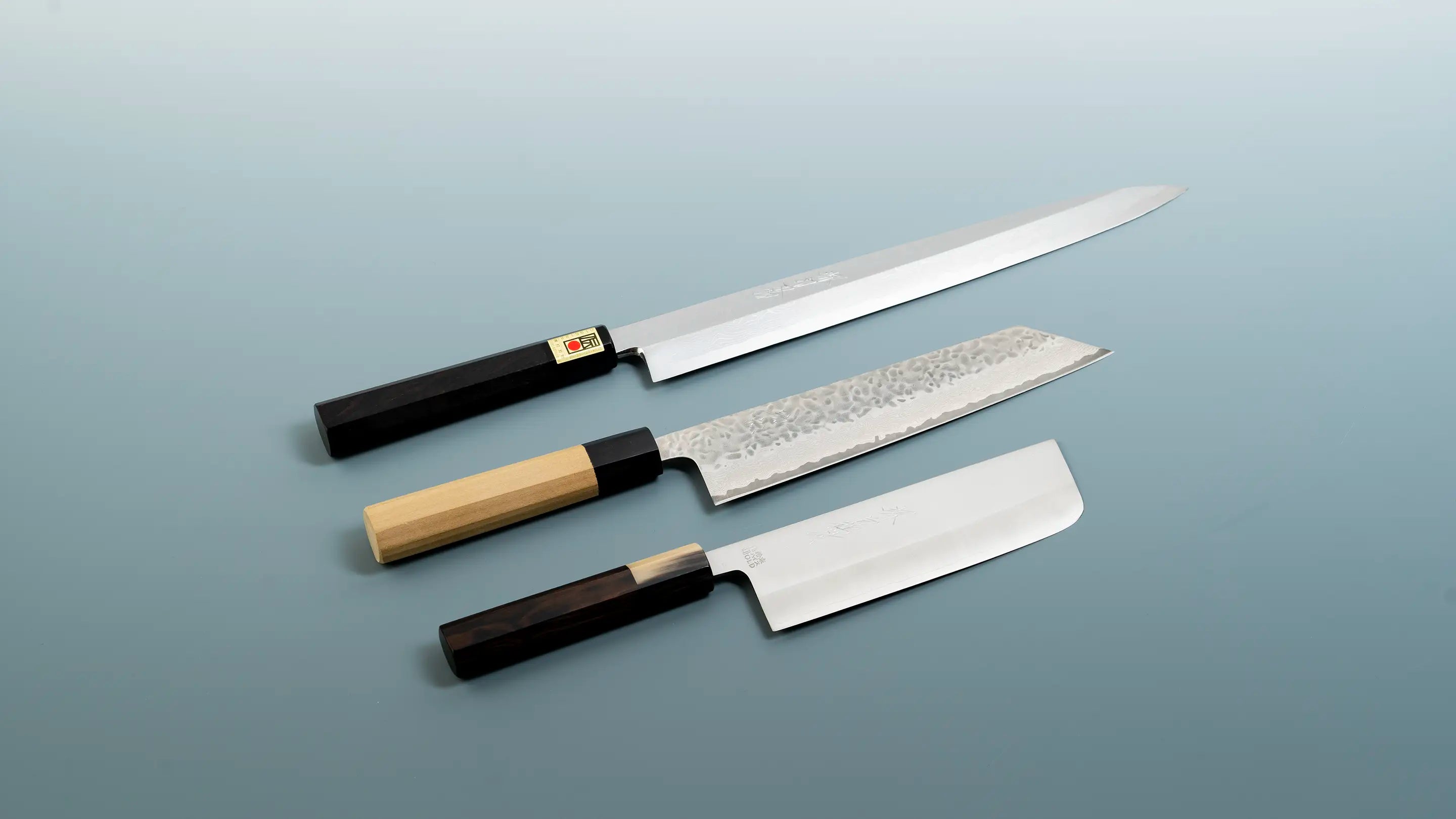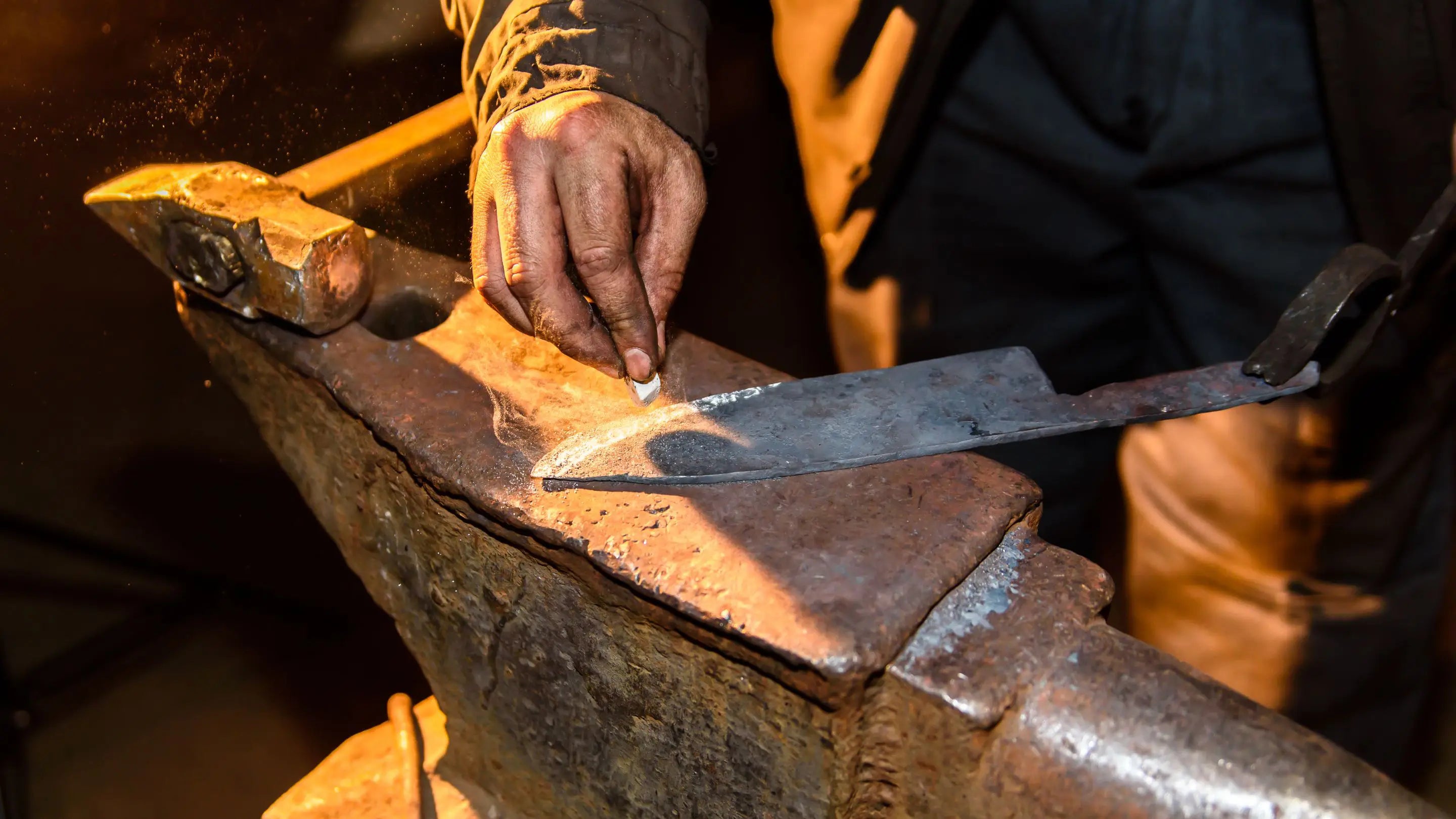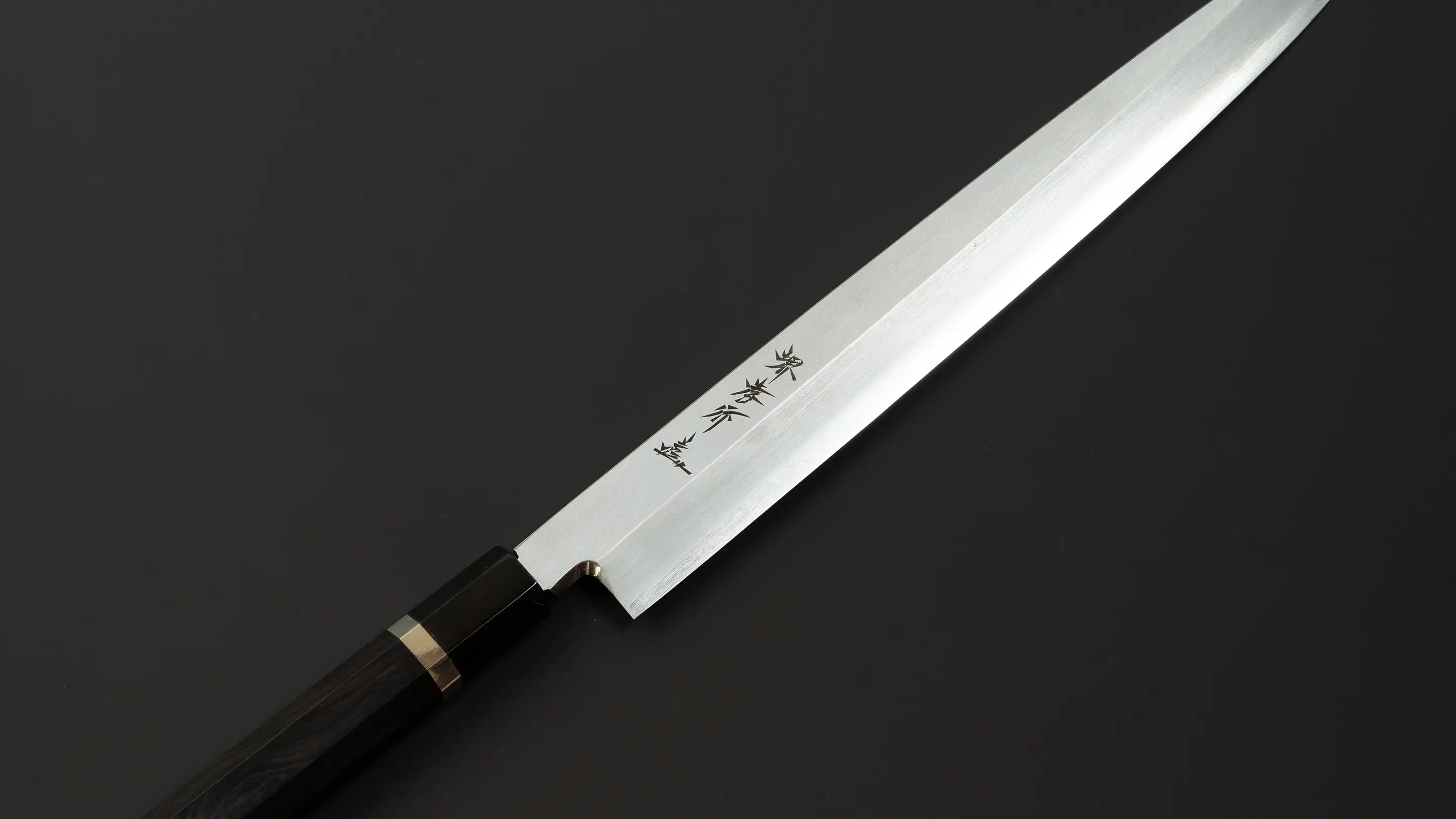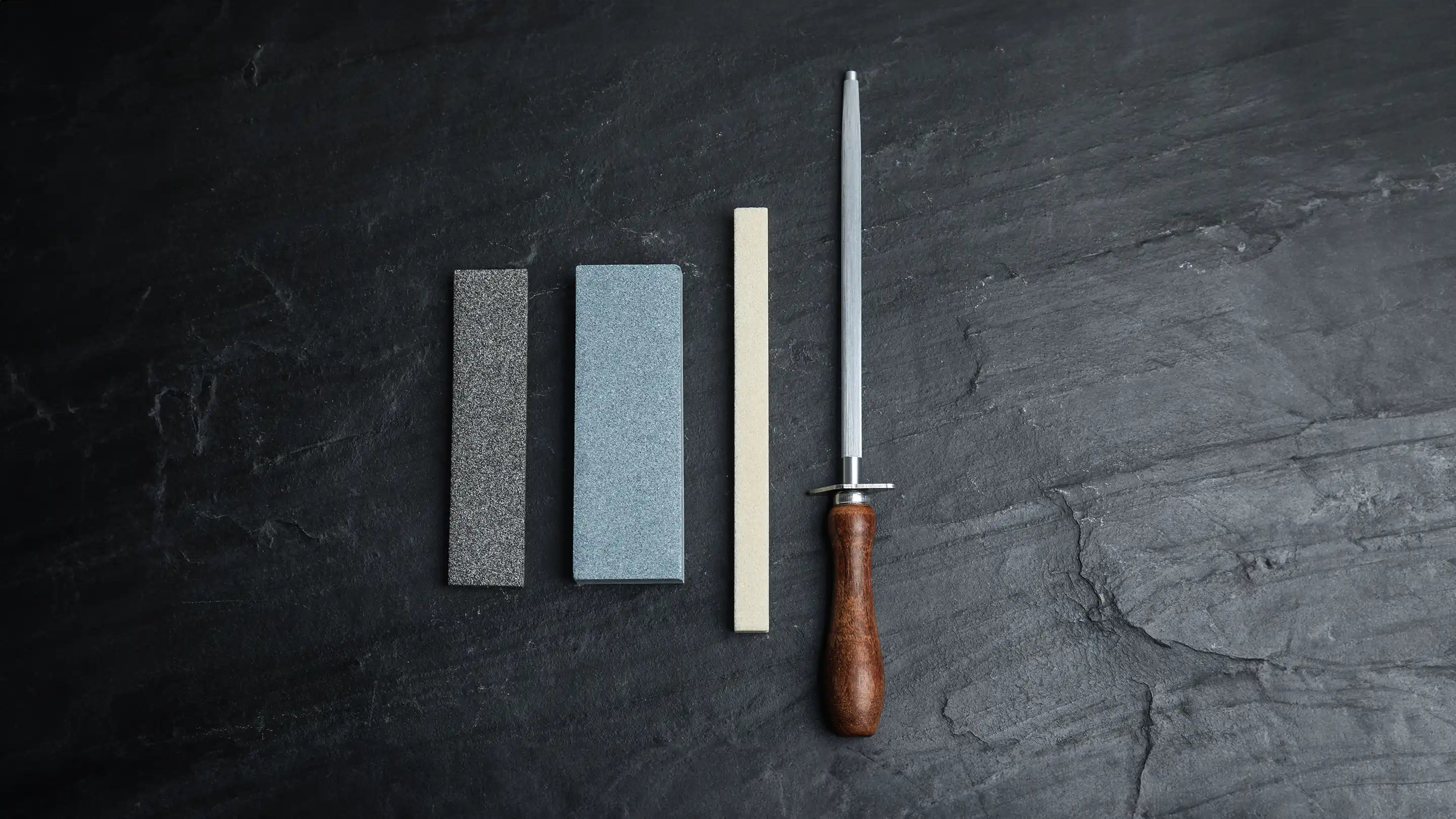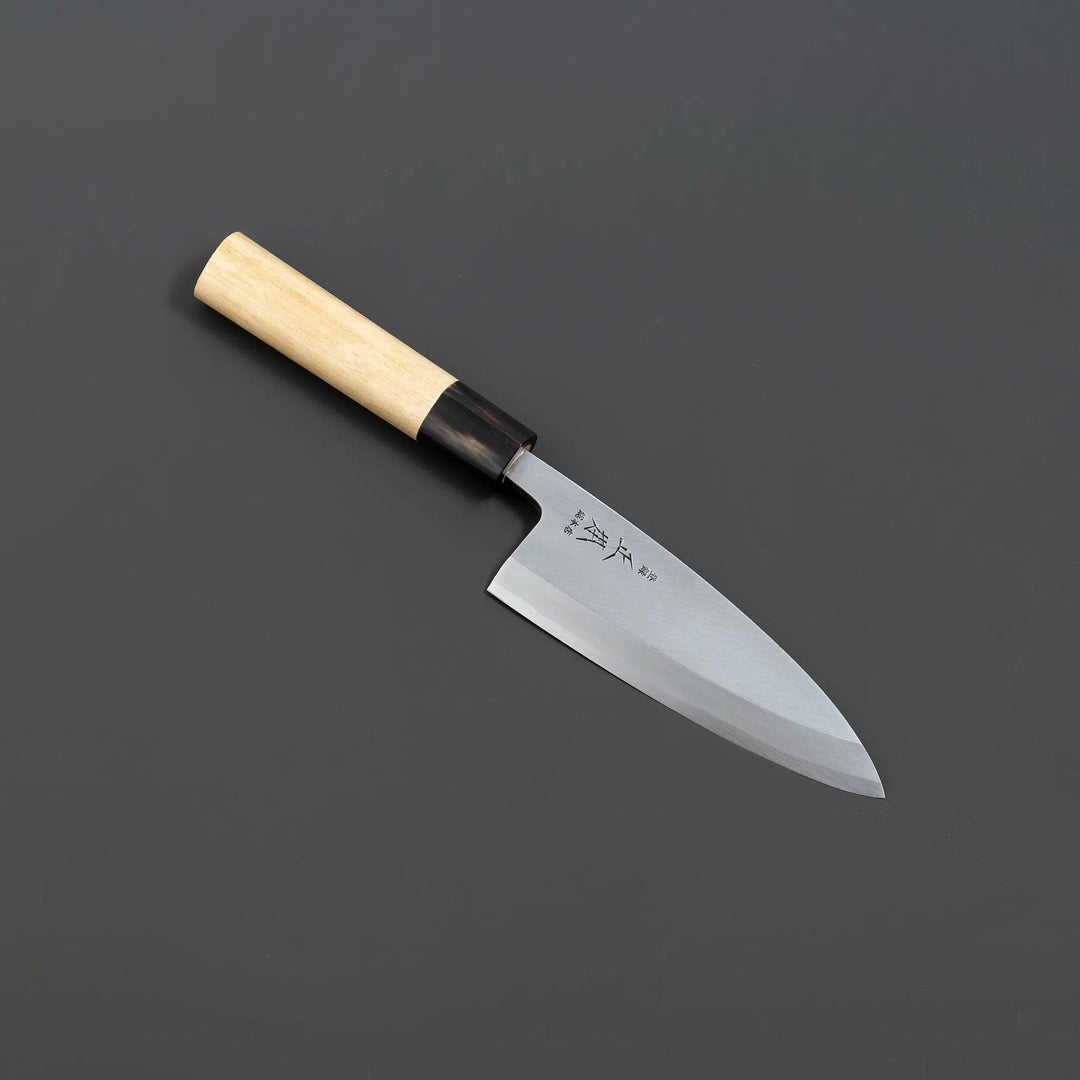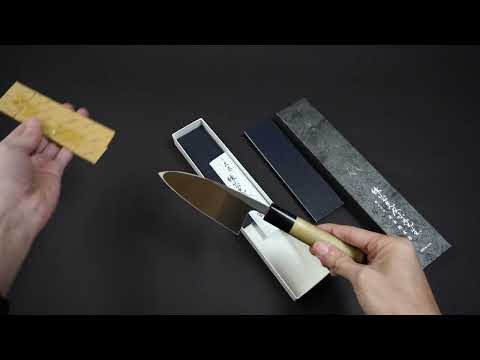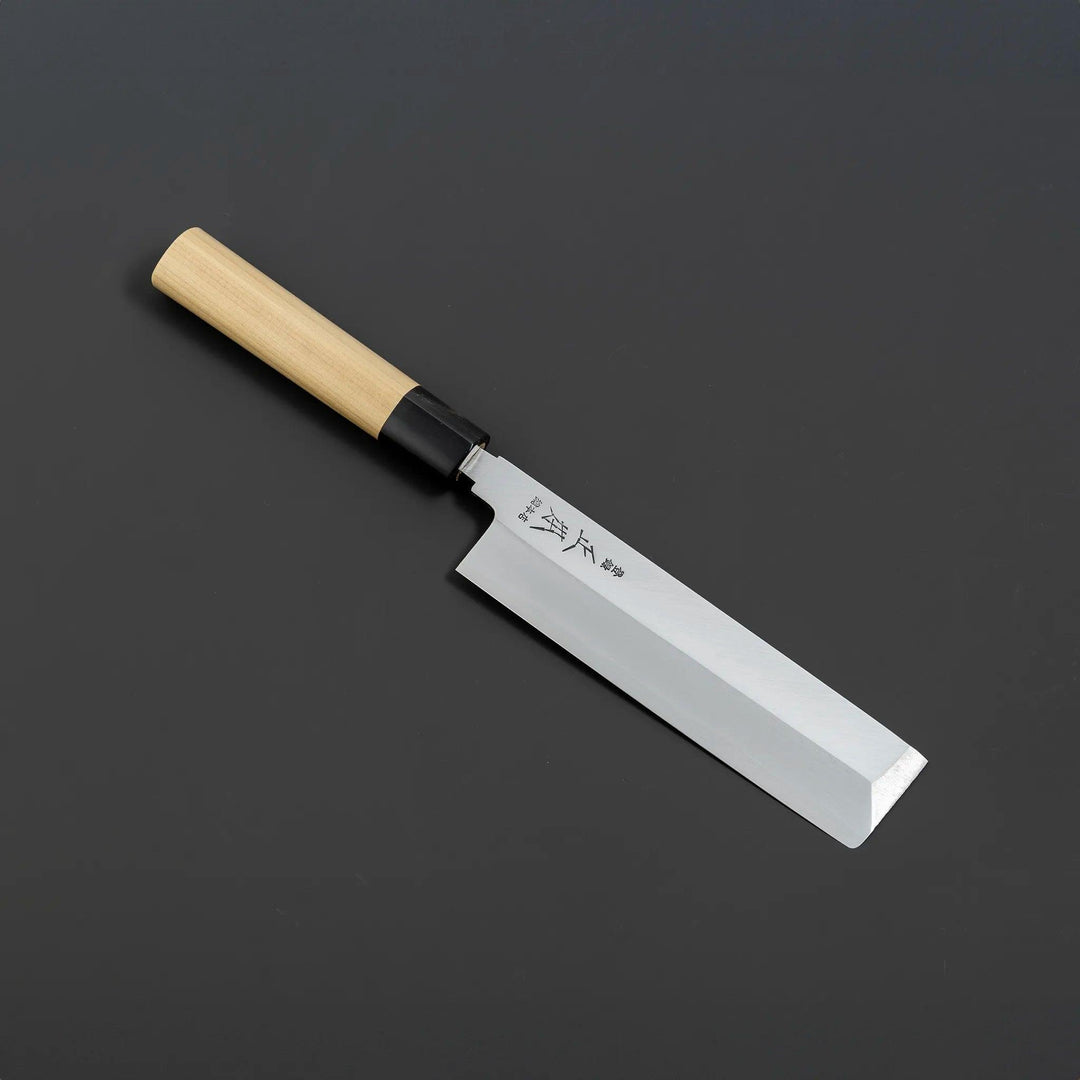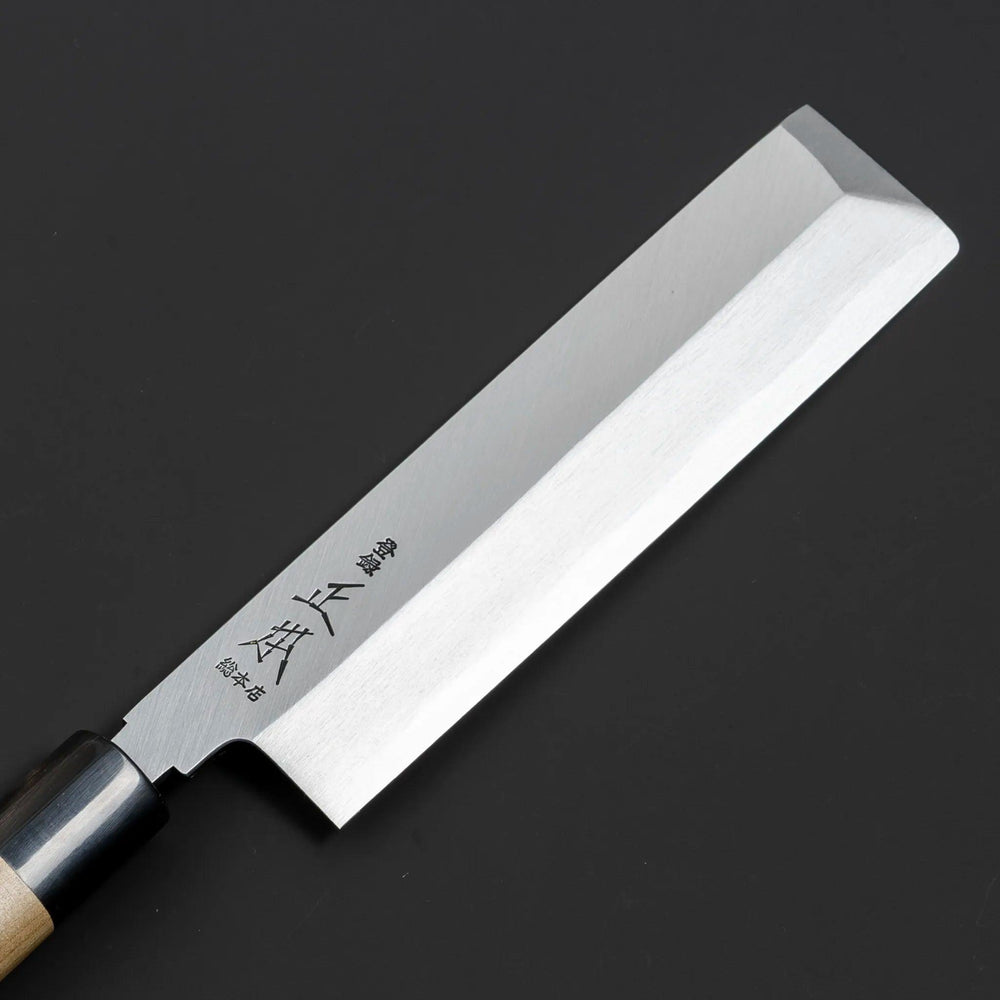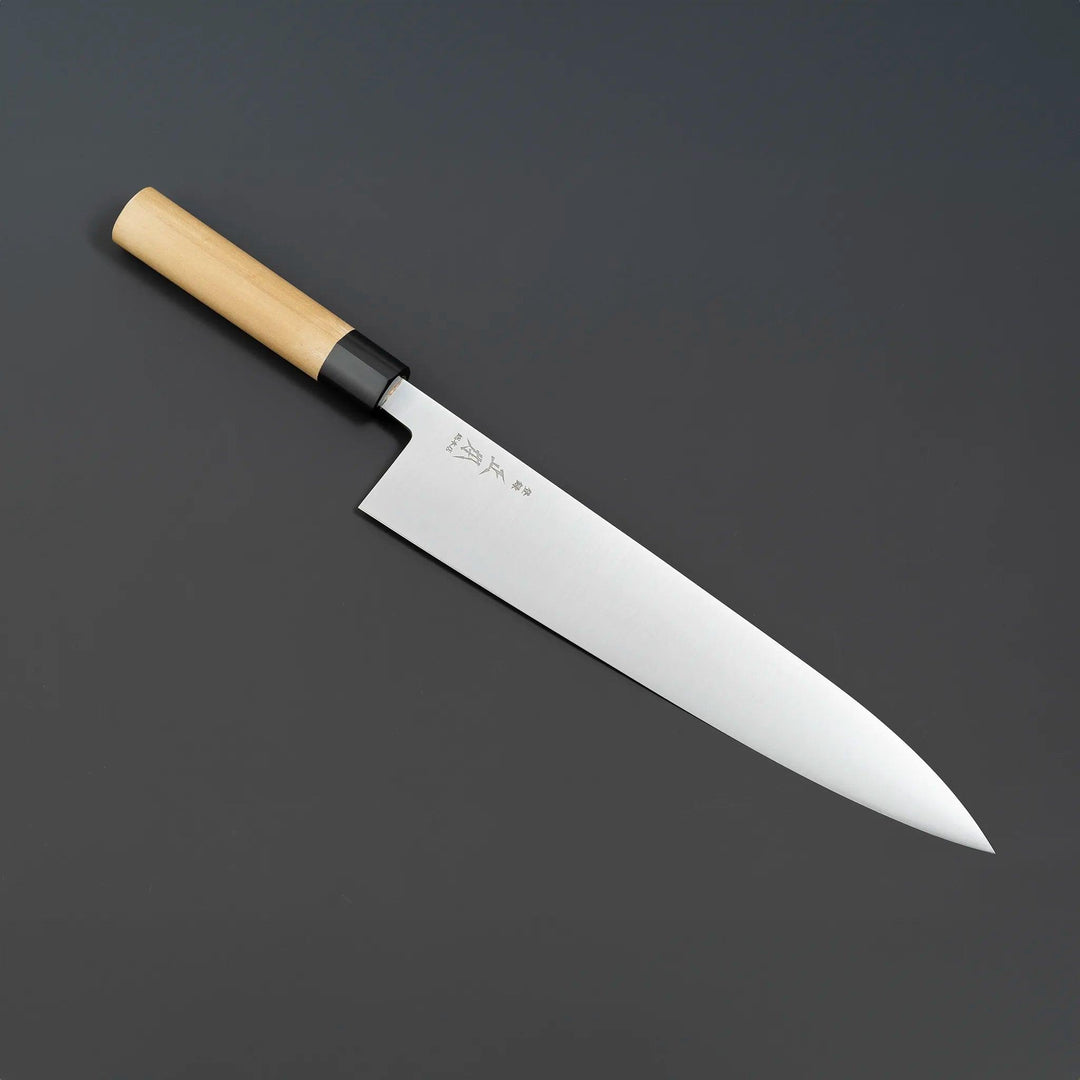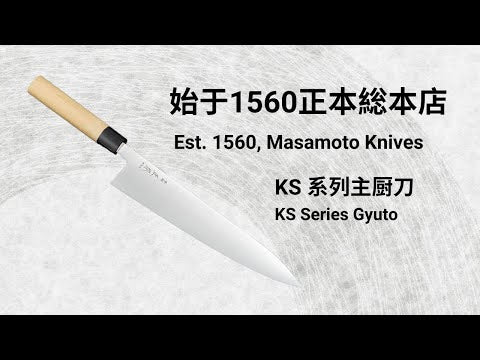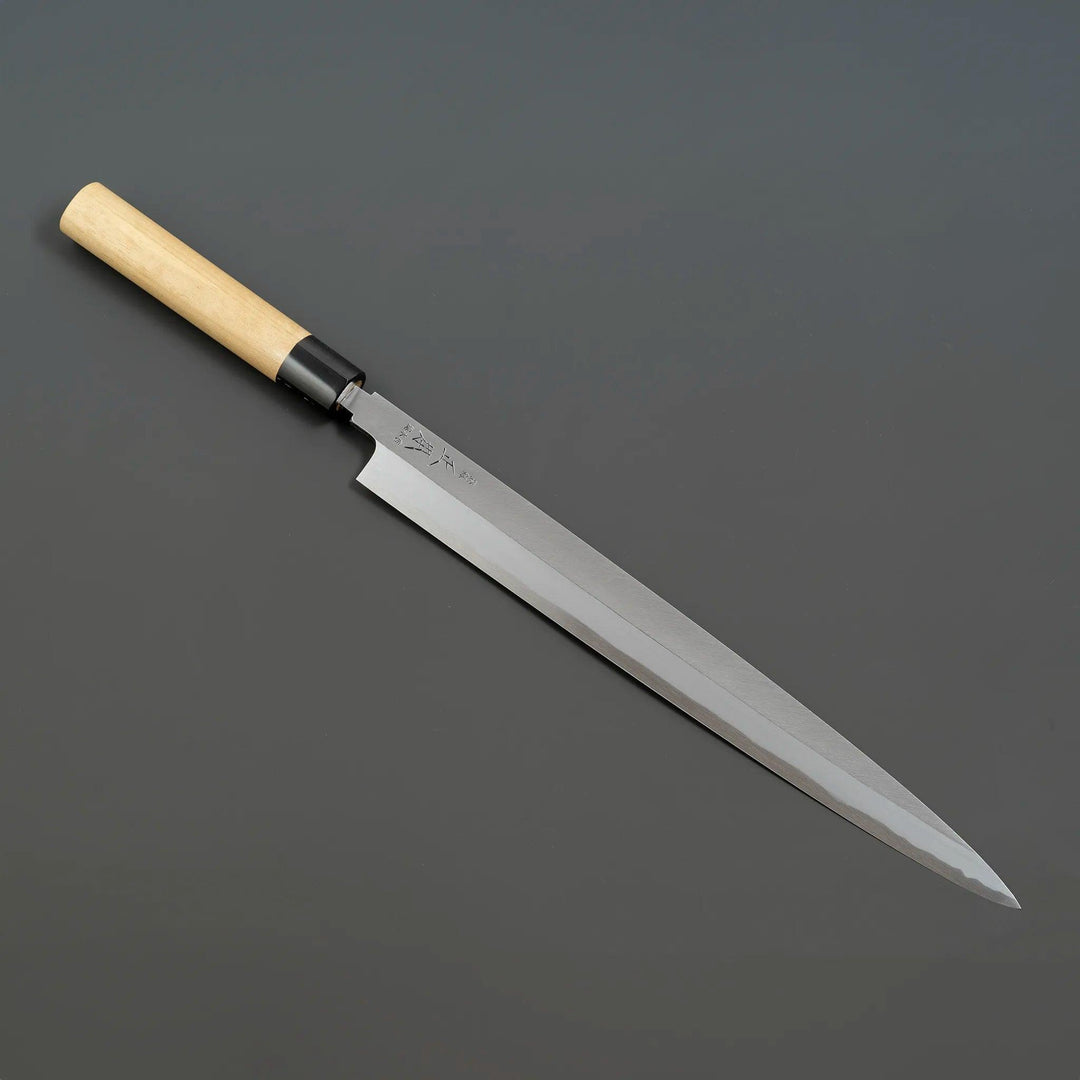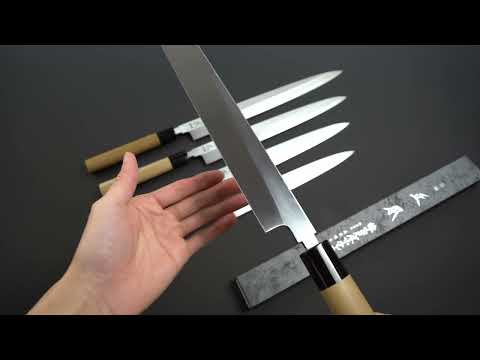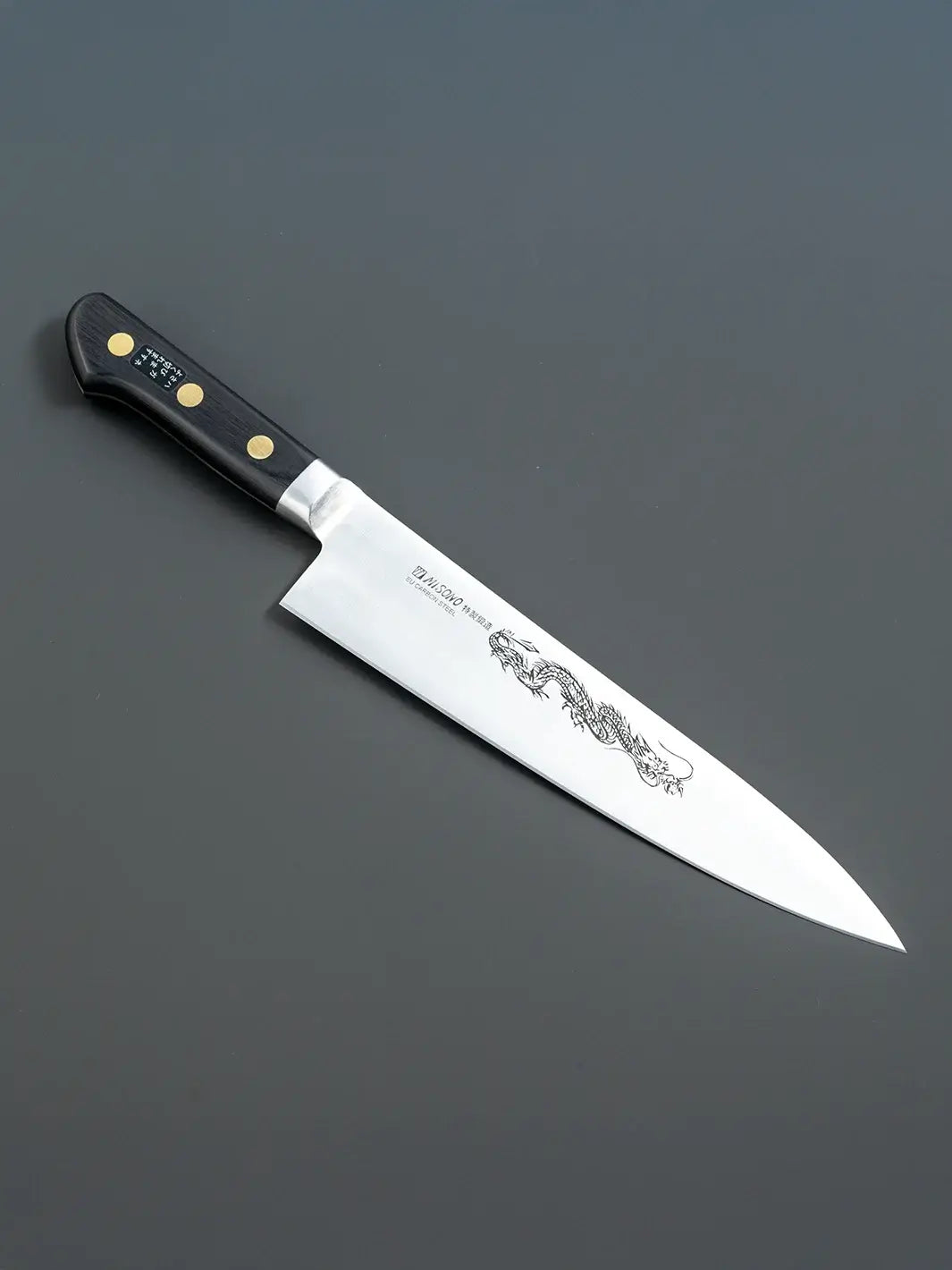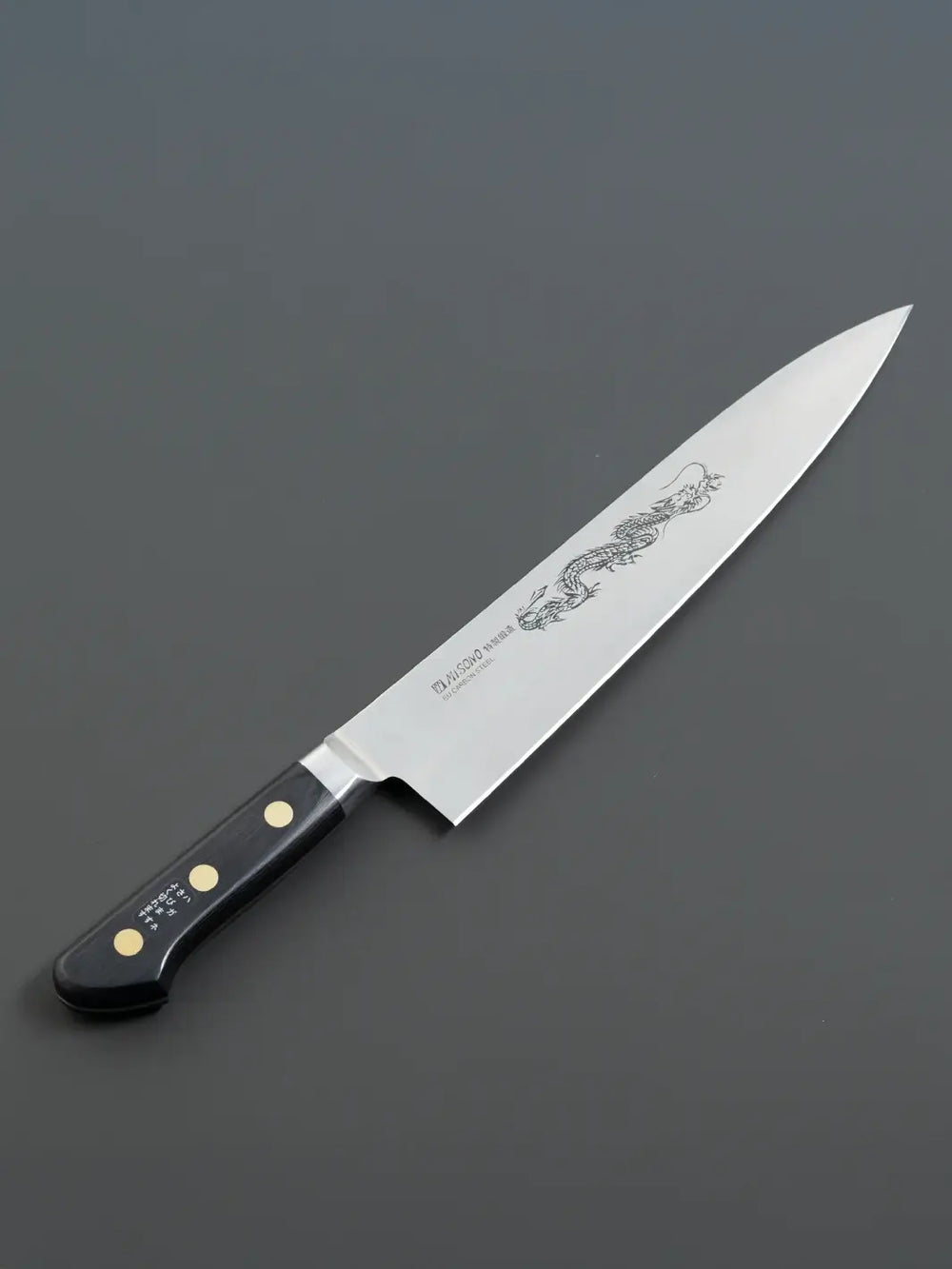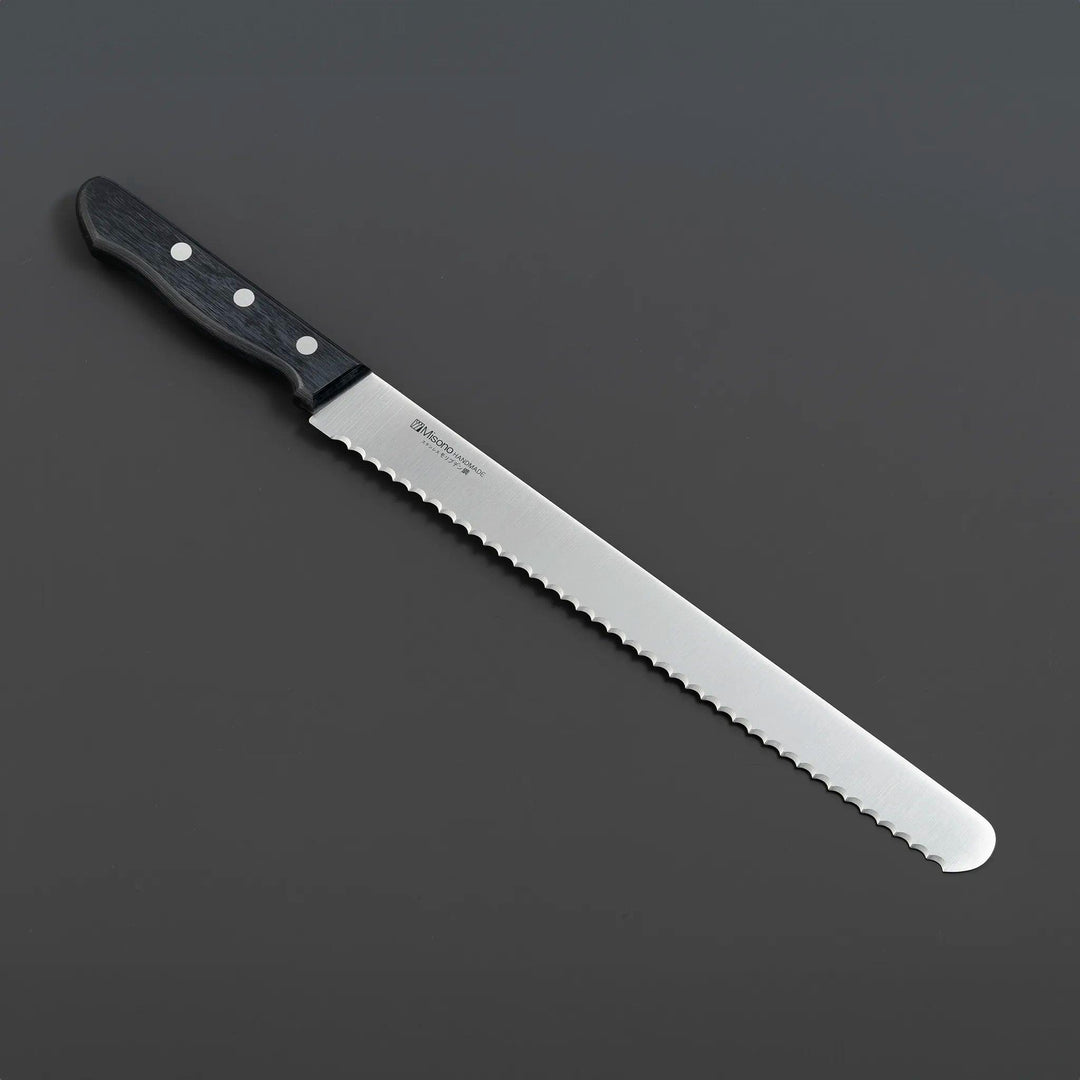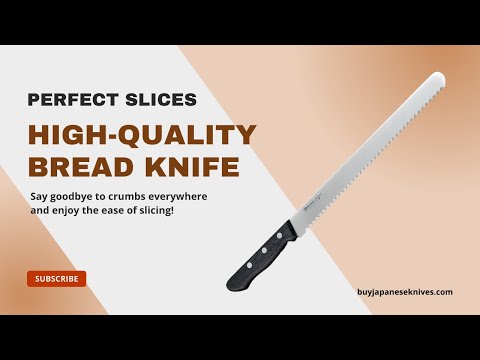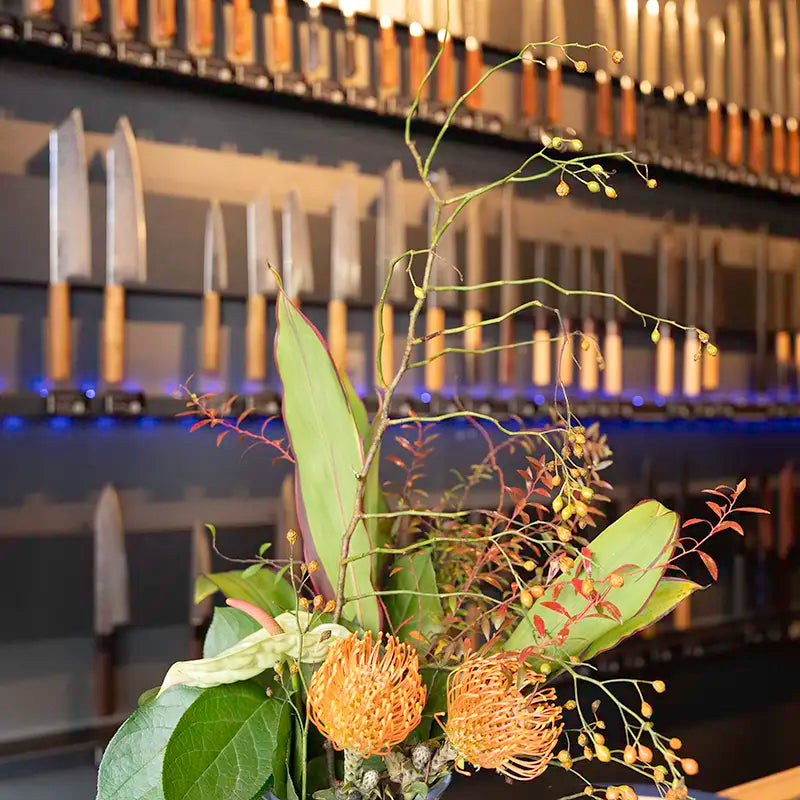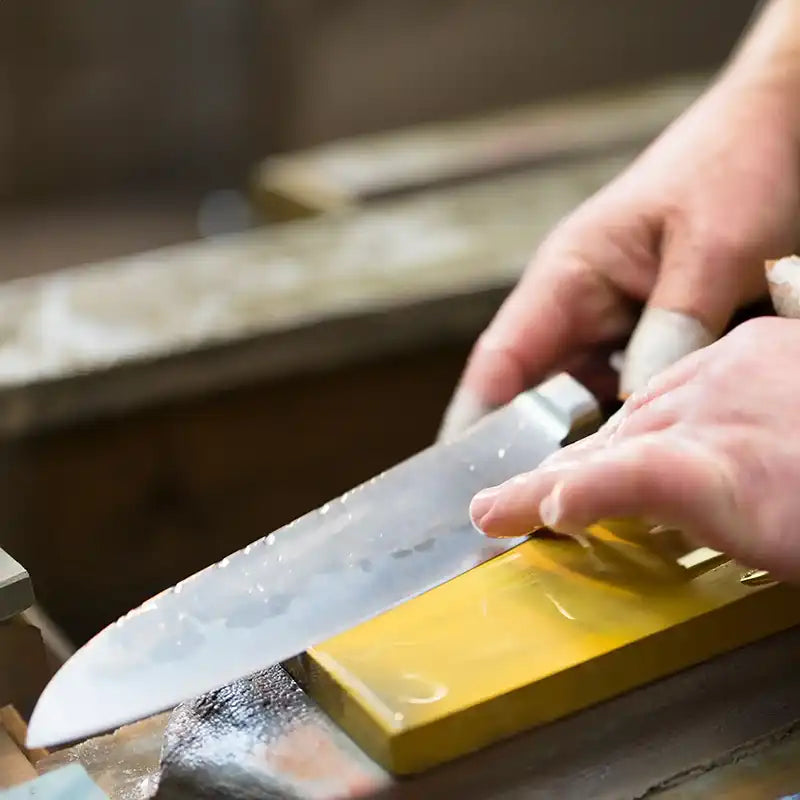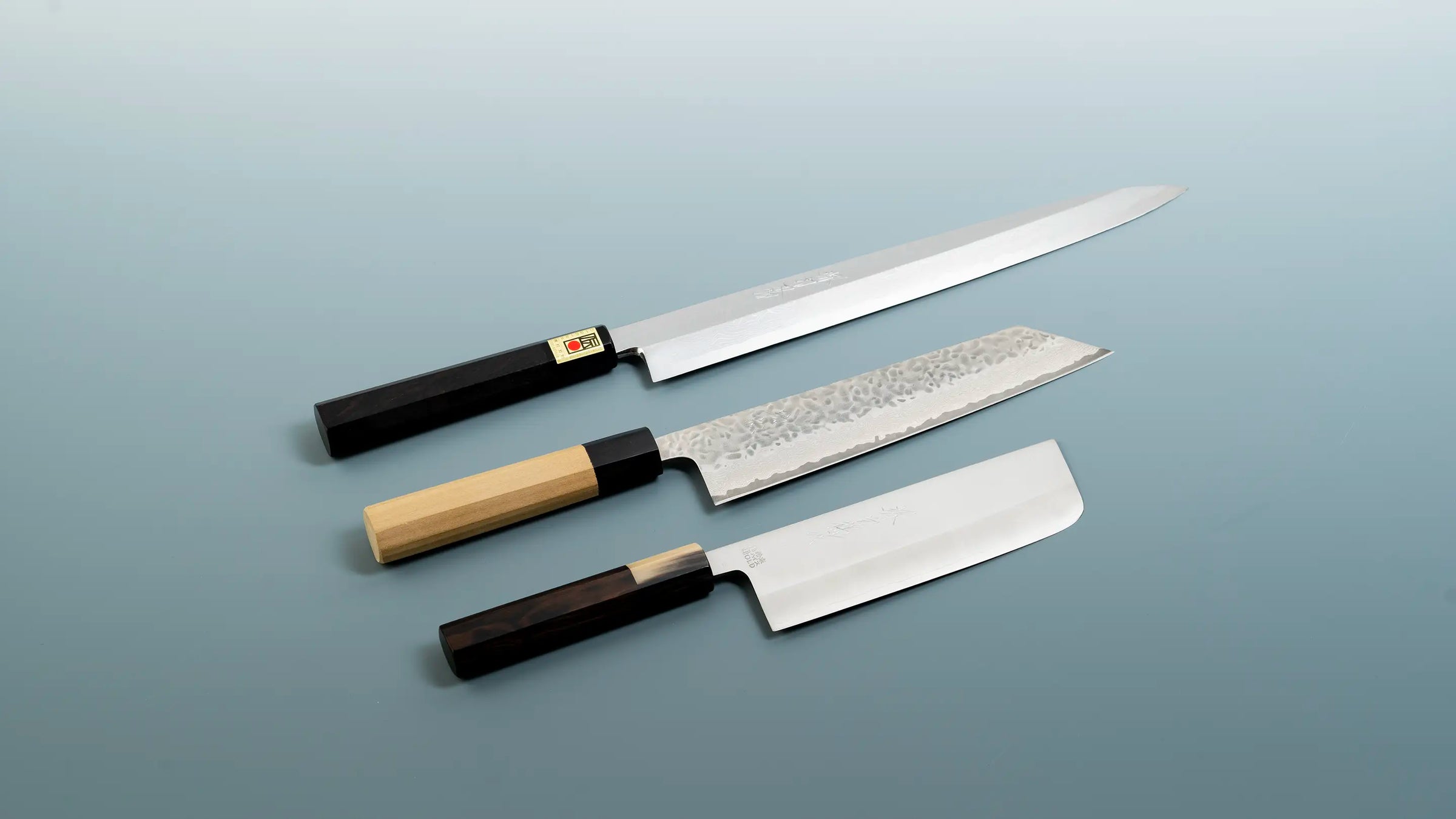
Knife Styles
Knife Design & Style Guide
Find the Perfect Japanese Kitchen Knife
🇯🇵 Traditional Japanese Knives
Wa-Gyuto
A Wa-Gyuto is a Japanese chef knife with a Western-style blade and a traditional Japanese wa-handle.
Sashimi knife (Yanagiba)
A Yanagiba is a traditional Japanese sashimi knife with a long, single-beveled blade designed for clean, precise slices of raw fish.
Deba Knife
A Deba knife is a thick, single-beveled Japanese knife used for filleting fish and cutting through small bones.
Usuba Knife
An Usuba knife is a traditional Japanese vegetable knife with a thin, single-beveled blade for precise, clean cuts.
Japanese Knives
View allWestern Kitchen Knives
boning knives pointed shape
Boning knife with a pointed shape, designed for easily separating meat from bones.
Western Knives
View allSingle-Bevel Knives
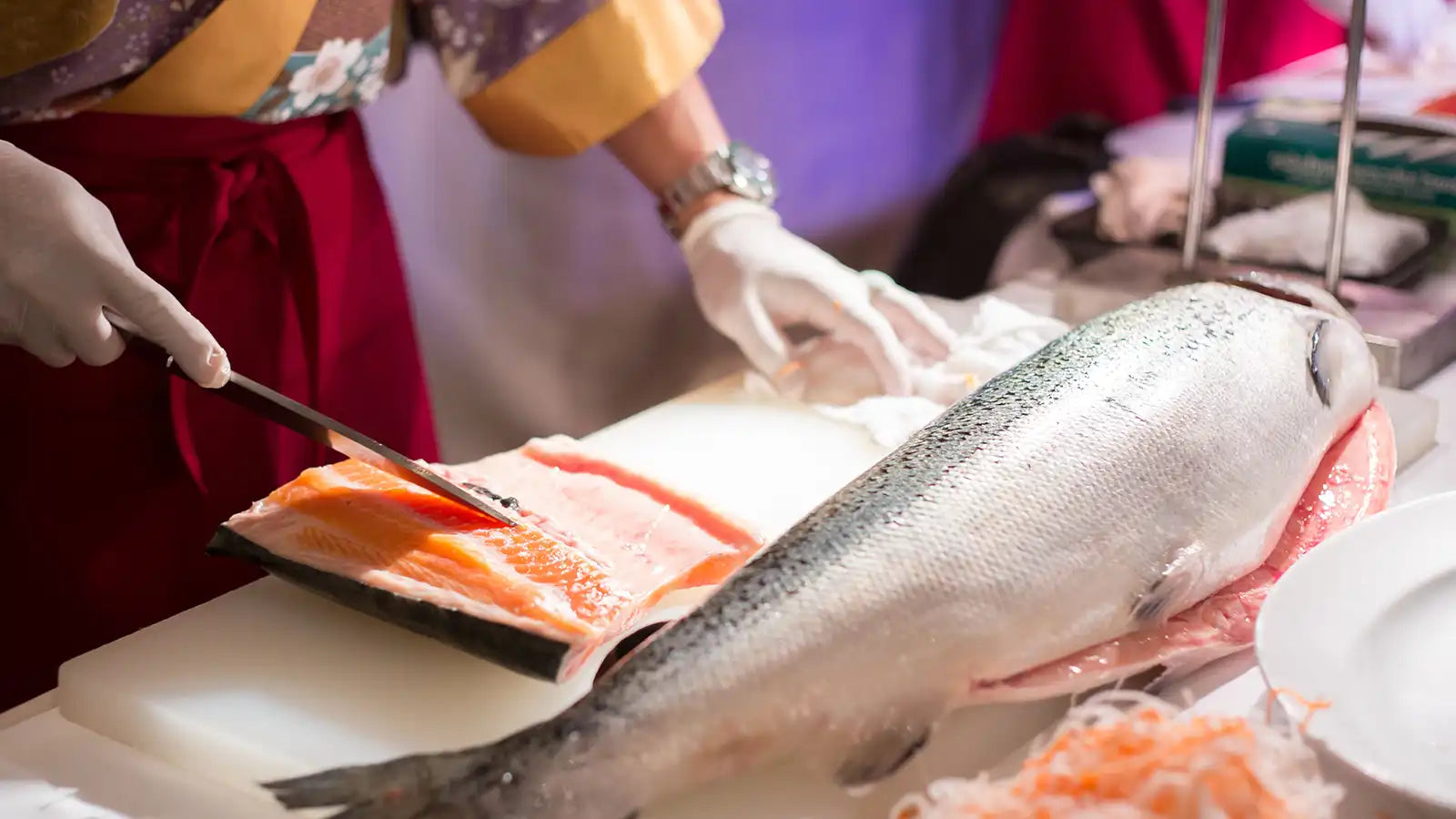
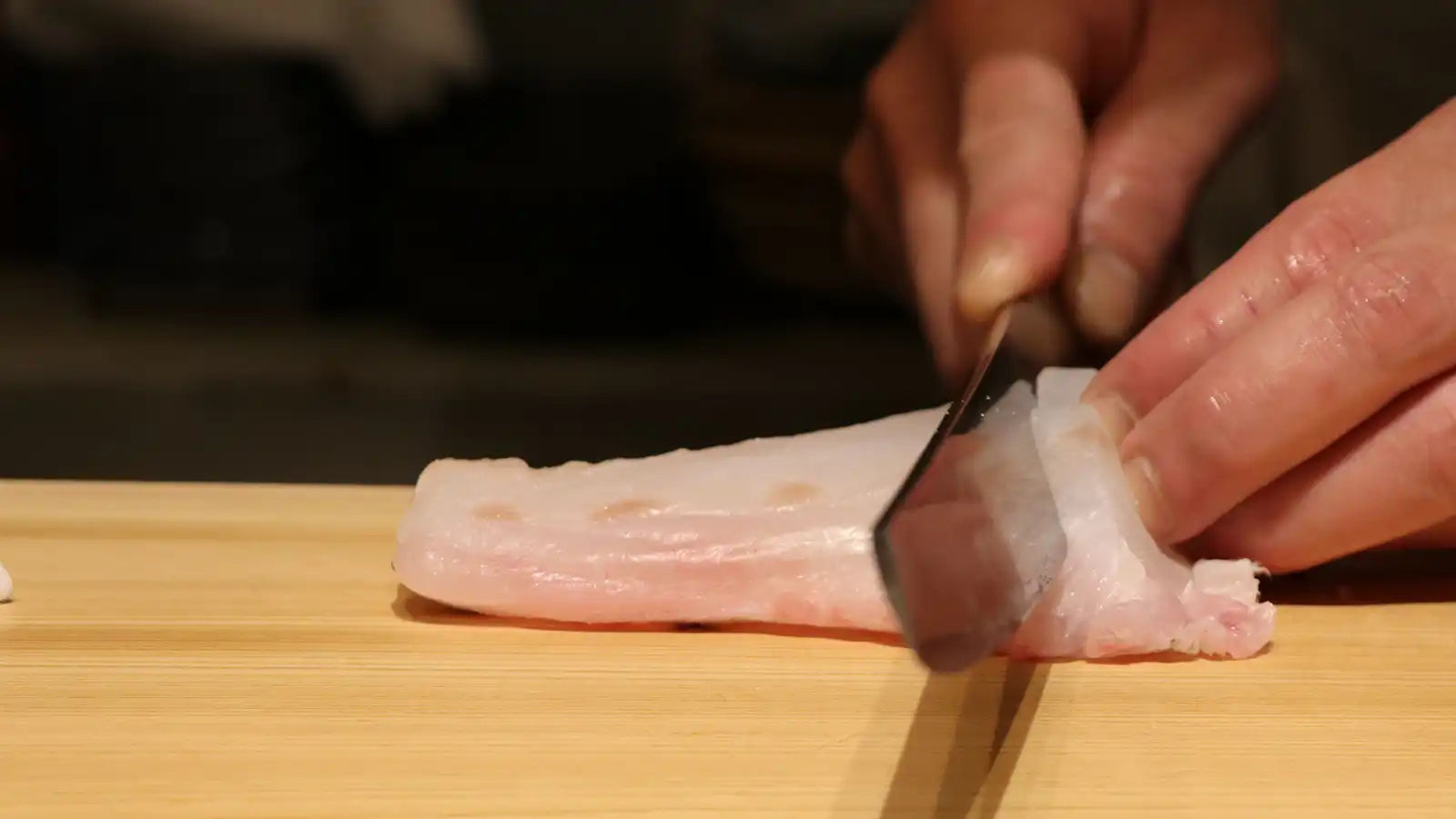
Single-bevel Japanese kitchen knives
Precision Cutting: The single-bevel design allows for extremely sharp edges, enabling precise cuts. This is especially important in sushi or sashimi preparation, where clean, smooth cuts preserve the texture and appearance of the ingredients.
Reduced Food Damage: Single-bevel knives minimize pressure on the food, making it ideal for delicate ingredients like fish and vegetables. This helps maintain the integrity of the food during slicing.
Better Control: Single-bevel knives offer greater control over the cutting direction and depth, making them perfect for intricate tasks such as slicing, filleting, or vegetable carving.
Double-Bevel Styles
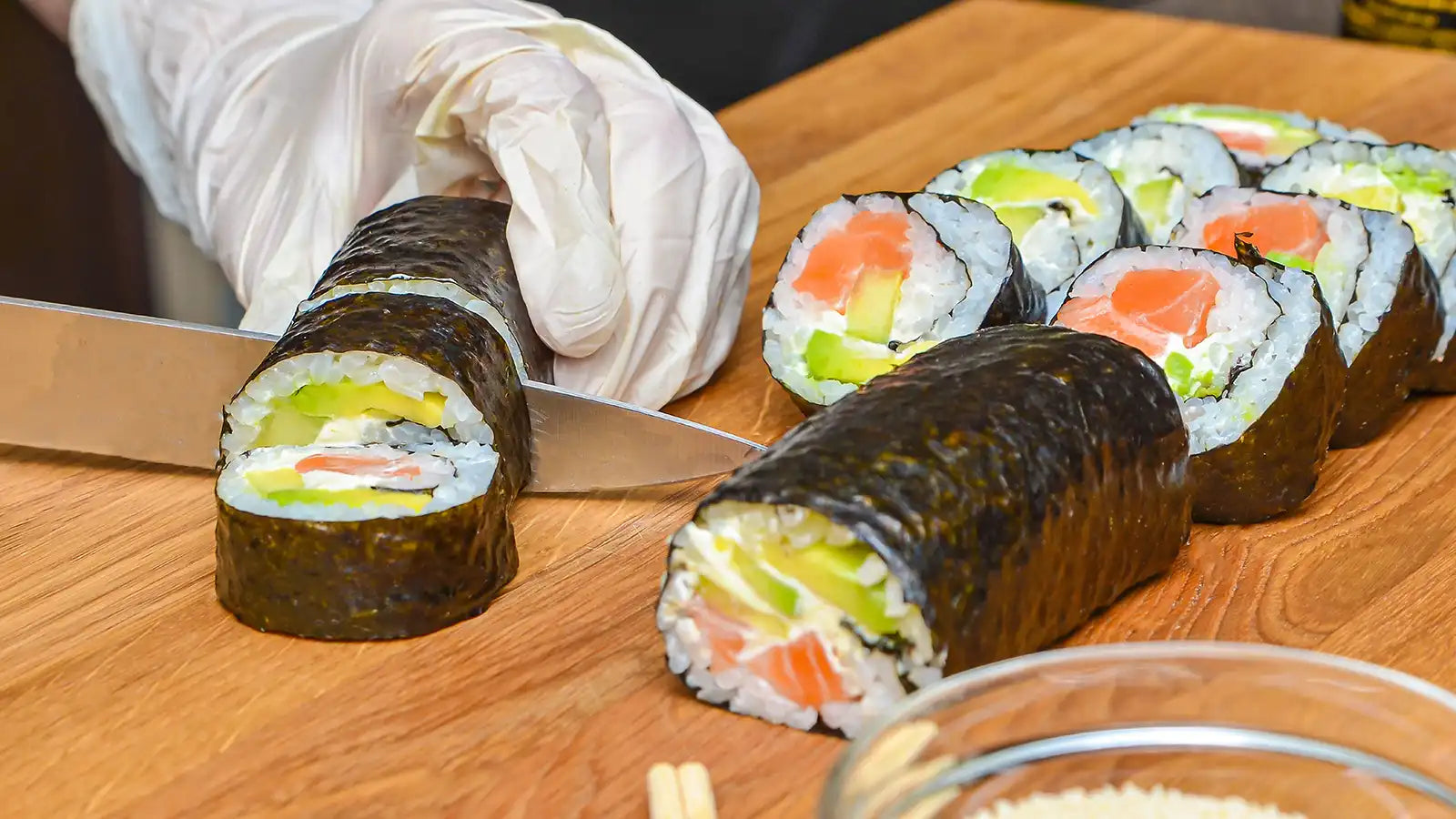
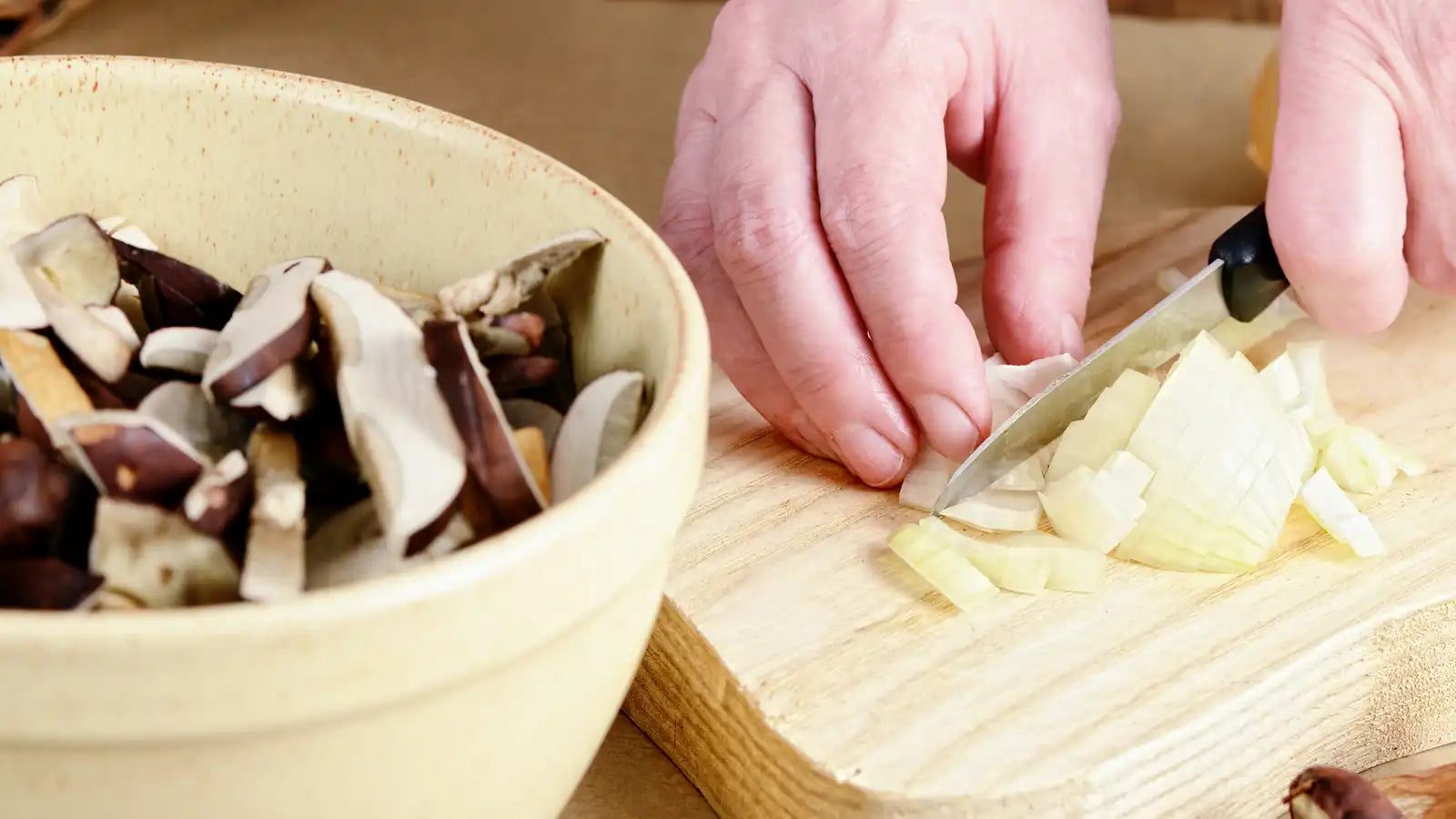
Double-Bevel Knives
- Versatility:Western knives typically feature a double-bevel design, providing a balanced, sharp edge on both sides. This makes them versatile and suitable for a wide range of tasks, from chopping vegetables to cutting through tougher meats.
- Durability:Western knives are made from tougher, more durable materials, often with a thicker, heavier blade. This makes them well-suited for forceful cutting tasks, such as breaking down meat or cutting through bones, while maintaining their edge over extended use.
- Ease of Maintenance:With their softer steel composition, Western knives are easier to sharpen and maintain. The double-bevel edge is forgiving and can be easily restored with a sharpening tool, making these knives convenient for everyday use in both home and professional kitchens.




